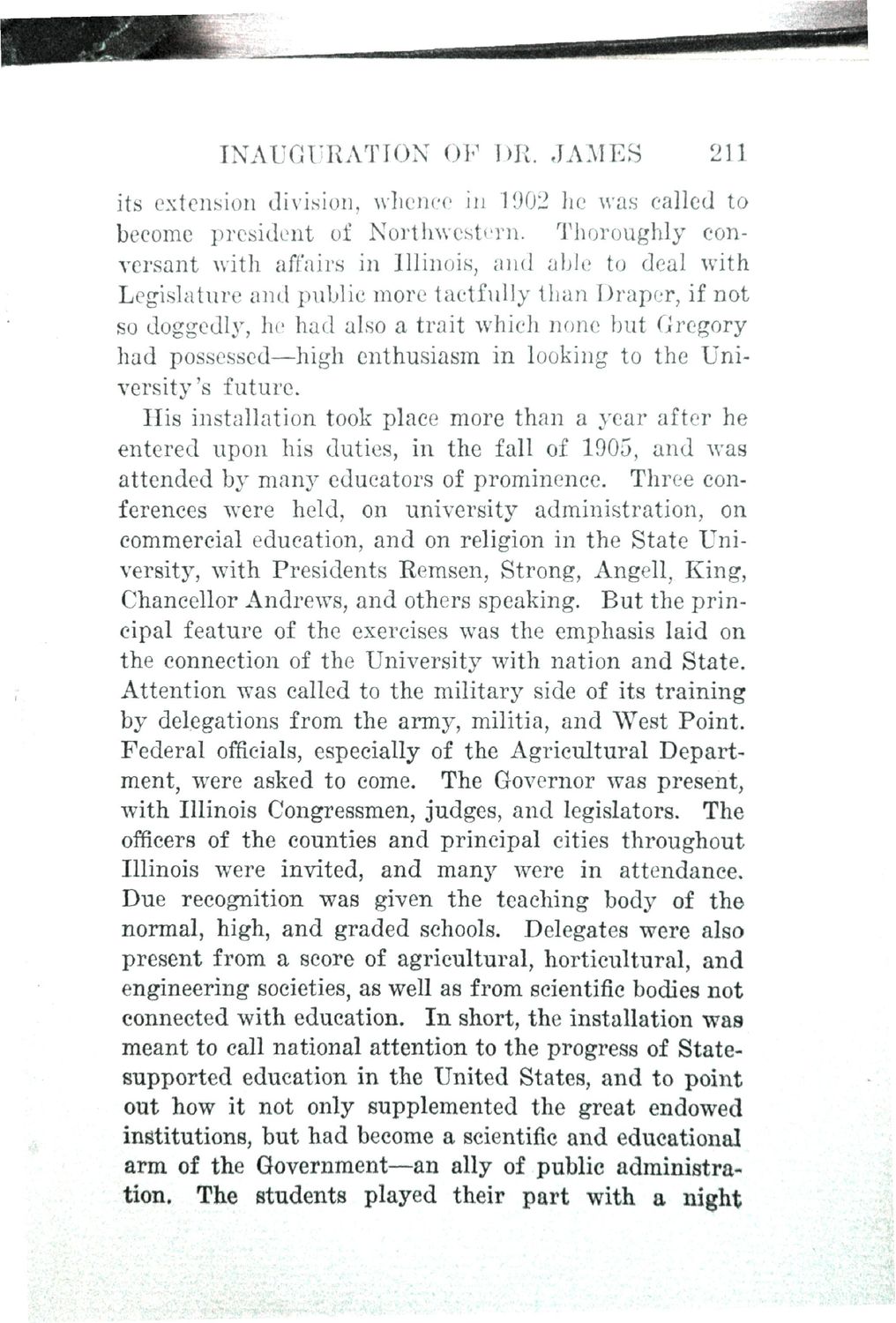| |
| |
Caption: Book - History of the University (Nevins)
This is a reduced-resolution page image for fast online browsing.

EXTRACTED TEXT FROM PAGE:
INAUGURATION OP DR. JAMES 211 its extension division, whence in 1902 he was called to become president of Northwestern. Thoroughly conversant with affairs in Illinois, and able to deal with Legislature and public more tactfully than Draper, if not so doggedly, he had also a trait which none but Gregory had possessed—high enthusiasm in looking to the University's future. His installation took place more than a year after he entered upon his duties, in the fall of 1905, and was attended by many educators of prominence. Three conferences were held, on university administration, on commercial education, and on religion in the State University, with Presidents Remsen, Strong, Angell,, King, Chancellor Andrews, and others speaking. But the principal feature of the exercises was the emphasis laid on the connection of the University with nation and State. Attention was called to the military side of its training by delegations from the army, militia, and West Point. Federal officials, especially of the Agricultural Department, were asked to come. The Governor was present, with Illinois Congressmen, judges, and legislators. The officers of the counties and principal cities throughout Illinois were invited, and many were in attendance. Due recognition was given the teaching body of the normal, high, and graded schools. Delegates were also present from a score of agricultural, horticultural, and engineering societies, as well as from scientific bodies not connected with education. In short, the installation was meant to call national attention to the progress of Statesupported education in the United States, and to point out how it not only supplemented the great endowed institutions, but had become a scientific and educational arm of the Government—an ally of public administration. The students played their part with a night
| |